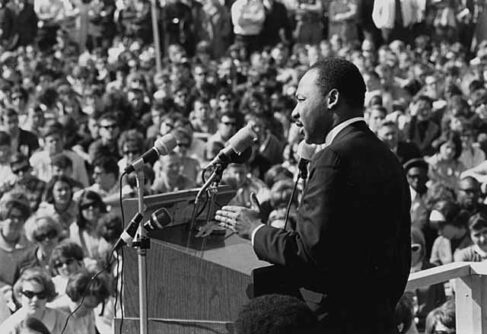With increasing wealth inequality, more parents are more concerned to foster generosity in their kids. A new children’s book from Adam and Allison Grant seeks to teach children about gift-giving.
Parents want their children to be caring, compassionate, and generous. That’s no easy task, as every mother or father knows from the first time one’s child cries out, “That’s mine! Mine!”
In these days of increasing income inequality, raising generous kids is an especially fraught topic, as well-to-do parents want to ensure that their children are attentive to the needs of those less advantaged.
Of course, concern to raise generous children is not new. Seventeenth-century philosopher John Locke lived in the household of the Earl of Shaftesbury as household physician and children’s tutor. In his role as tutor, he invented alphabet blocks. He also gave advice about teaching children to be generous:
As to the having and possessing of things, teach them to part with what they have easily and freely to their friends, and let them find by experience that the most liberal has always the most plenty, with esteem and commendation to boot, and they will quickly learn to practice it.
His contemporary Jean-Jacques Rousseau, likewise deeply interested in children’s education, retorted:
Arrange it so, says Locke, that they may be convinced by experience that the most liberal always comes off best. That is to make a child in appearance liberal and in fact a miser. Locke adds that children will contract in this way the habit of liberality. Yes, of a usurious liberality which gives an egg to have a cow. But when the case involves straightforward giving, farewell to habit.
Rousseau thought that living examples of generosity foster the same spirit in children, a view shared by Adam Grant, Wharton School professor, and his wife Allison Sweet Grant. Their new children’s book, The Gift Inside the Box, was published this week.
Adam Grant is a natural to write a book about generosity aimed at children. His 2013 Give and Take: An Evolutionary Approach to Success (which I wrote about here) explained his findings about the value of a generous, “otherish” disposition, and he drew on those findings and pediatric research in his 2014 New York Times op-ed “Raising a Moral Child.” Allison Sweet Grant is equally qualified as co-author. She is mother of their three children and a psychiatric nurse practitioner. The book is charmingly illustrated by Diana Schoenbrun.
The Gift Inside the Box tells the story of a gift box seeking a worthy recipient. It won’t be a spoiler to say that the box encounters several children who would not make gracious recipients before finding a match in an open-hearted child. The book’s greatest strength is a narrative that encompasses both sides of the gift relationship, the giver and the recipient.
I wish the book might have gone yet further in exploring the moral complexity of the gift relationship. For one thing, no one (other than, perhaps, the gift box itself) knows what is in the box. But one aspect of thoughtful giving is finding the right gift for the recipient—and something that is right for the giver to give. A gift that is wrong for either the giver or the recipient raises complex questions, perhaps best left for grown-ups (for example, Cicero’s notion of the “harmful favor” poses adult-level conundrums).
But a gift that is just right for the giver and the recipient makes for an engaging, morally-nuanced story accessible to children. Arnold Lobel’s The Letter, the final story in Frog and Toad Are Friends, for example, illustrates the mutual delight of Frog and Toad when Frog creates a gift for Toad that reaffirms their friendship.
Other children’s classics explore giving when it’s not so easy and delightful to be a giver. My favorite among these is Jerry Pinkney’s Caldecott-Medal winner, The Lion & the Mouse, which wonderfully retells Aesop’s fable with pencil and watercolor illustrations that capture the moral complexity and generosity of both the lion and perhaps especially the small mouse, with whom children will identify.
On the theme of being too “grabby,” Shel Silverstein’s poem “Lester,” included in his Where the Sidewalk Ends humorously illustrates the perils of greed. (Shel Silverstein also wrote The Giving Tree, which presents itself as a children’s book, but which the late scholar of philanthropy Amy A. Kass observed was better read by parents than their children).
As the holidays approach, parents will be looking for books to put their children in the right spirit for giving and receiving. Adam Grant and Allison Sweet Grant’s new book, along with older classic children’s books, might themselves make gifts to share the spirit of the holidays.
Adam Grant and Allison Sweet Grant, The Gift Inside the Box. New York: Dial Books, 2019. $18.99.






